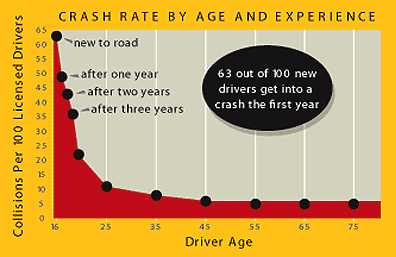
Before driving with your teen, sit in the passenger seat while an experienced driver is behind-the-wheel so that you get the road perspective from the right side.
Make sure the teen is familiar with all the controls and warning lights.
Do not have any passengers during the first few practice drives.
Use “commentary” driving at the beginning of the experience. Commentary driving means the student says out loud everything they see and plan to do before you need to mention it. This lets you know they are scanning the roadway and mirrors and are identifying risks. You can relax and only point out things that the teen is not mentioning. As an example, “The speed limit says 35. I’m going 35. I see the kids on the side of the road and I’m covering the brake.”
Practice initially in short 10-15 minute intervals. Start in a parking lot. Graduate to quiet residential streets. Move to busier streets.
Practice in all weather and light conditions – rain, fog, snow, dusk, night. Again, quiet residential streets first, and then moving to more heavily traveled roads.
Look for positives in your teen’s driving. Try to acknowledge things done well twice as often as criticism.
Decide ahead of time how to handle instruction. Let student know that if you say “Stop” or “Brake Now”, the student must stop immediately and then ask why. Also, “Go, go, go” means to accelerate quickly, now!
Plan the skills to be worked on before practice begins.
Give directions well in advance of maneuvers.
Don’t take student out driving after a bad day – yours or theirs. Wait until you are both in a good mood and alert.
Reserve early Saturday or Sunday mornings for practice. You’ll have the streets, freeways, confusing intersections and downtowns all to yourself.
Practice all the time. After years of being their chauffeur, they can now drive you everywhere. Take different routes to regular destinations. Have them drive through a takeout window. If you pass a free parking ramp, have them go up and down the ramp.
Don’t forget to practice on country roads. Many country roads don’t have shoulders. Curves can be sharp and speeds can be high. Cross-traffic is moving quickly. Passing is dangerous, especially on hills.









